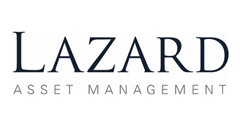Headlines
- Clients are increasingly interested in ESG and particularly if prompted.
- RMs/IMs feel this conversation increasing in importance. However, on the whole, clients will need education as to how effective their investments are at fulfilling an ESG mandate.
- From the manufacturer’s perspective, fund managers have been working hard to create ESG solutions and develop their own hallmarks. This has resulted in an explosion of options from managers in the UK and Europe putting forward at least one ESG-labelled strategy, albeit with divergent targets.
- Given the prominence of ESG as part of investment strategy conversations, offering it within (at least part of) investment portfolios is still a selling point.
- There is a magnifying glass on the make-up of ESG-labelled portfolios and investments.
- In the past, screening and exclusions have been the key methods behind creating an ESG portfolio. This is no longer satisfactory to clients, who now have a greater amount of information at their fingertips.
- Clients want to understand, to a greater degree, how their investments are making a difference. In general, we now have a greater social conscience and as such, it is not simply that investments are ESG, it is how they satisfy ESG that is the focal point.
- There is a wider question around what can be held within these portfolios. Some managers are comfortable holding what have traditionally been avoided in ESG portfolios, on the condition that there is a clear and achievable sustainability plan in place, demonstrating important nuance and screening at the individual asset level rather than industry.
- There is a lack of market consensus on what constitutes an ESG investment.
- As there are no globally-accepted principles when it comes to assessing ESG investment, managers develop their own conditions. As a result, an ESG-labelled investment can vary wildly in its make-up between (and sometimes within) investment houses.
- Some countries have begun recognising the limitations of not maintaining a set of principles for the guidance of managers. As such, there are some instances of standards and ratings being introduced, which the managers within that geographical location can follow. However, these are naturally divergent across markets and given ESG is not a location-based issue, a global program to standardise ESG assessment may be necessary.
Key challenges
- Arguably the biggest challenge in terms of creating a progressive environment for ESG investing is the measurement and assessment of the ‘level’ of ESG in portfolios. As discussed, there are no standards against which to assess portfolios and, whilst clients are becoming more aware of what makes up their investments, there is still a level of detachment which means they may be mis-sold ESG.
- This is clearly as much an issue for regulators and governing bodies as it is for managers and clients. It is vital that we have standardisation and tiering to ensure that clients understand their investments and managers are not taking advantage of a selling point. Further, intermediaries (IFAs, WMs) must provide education to their clients on this topic, as they are the key conduit between those providing the investments and those demanding them. Aggregating around a common set of standards will be critical to this.
- A key client-level challenge is around investment performance. Our group discussed how, typically, clients will be willing to forgo a small amount of investment performance to achieve their desired ESG investment objectives. However, if there is a large divergence between performance of two otherwise similar portfolios, the client will likely opt for higher performance. That said, there are compelling arguments that the increased scrutiny of conduct risk, externalities and governance that ESG introduces makes these assets more robust for long term growth targets.
- It has been noted that the investment industry as a whole has found it difficult to see its role in the Paris Agreement. Managers and intermediaries are concerned that should they put too much onus on ESG and they are seen as a purely ESG organisation they become narrowly classified as such, to the detriment of other capabilities.
Conclusions
- If managers want to use ESG as a USP for their portfolios or their business, time is running out, but there is ample opportunity to compete in the retail market as conversations remain nascent.
- Intermediaries are a key conduit for transmitting the importance of ESG. They tie together the world of managers and clients and as such need to provide an information flow in both directions to educate managers as to what is necessary and clients about what themes are running through portfolios.
- In order to get consensus and for the industry to move forward in a constructive way, many call for standardisation (across markets and geographies) of ESG screening on investments. There are some bodies that are creating a collaborative environment for the ESG conversation – the Investment Association has representation on this topic, along with Climate Action 100+ and the IODC. Much like ratings agencies, consensus over the hallmarking body(ies) may well evolve organically.
- Fundamentally however, there is a risk of the industry getting left behind because it is too preoccupied with the detail of how we measure things and not concentrating on the bigger picture.
Expert: Jennifer Anderson, Co-Head of Sustainable Investment and ESG, Lazard
Facilitator: Joseph Marti, Principal Consultant, Sionic Global



